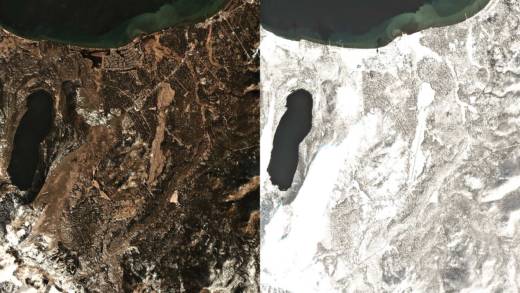A powerful storm visible in satellite images has dramatically changed the state’s seasonal snowpack totals, according to today’s monthly survey — but it still leaves California’s water supplies well below normal.
The Sierra Nevada’s biggest storm of the year attracted (and threatened) skiiers and closed some roads; Squaw Valley and Alpine Meadows reported 7 feet of snow this weekend. The storm also delayed state scientists’ monthly trek out to Phillips Station, just off highway 50 near Echo Summit. This is just one spot in the California Cooperative Snow Survey (CCSS) managed by the Department of Water Resources (DWR).
On Monday, survey chief, Frank Gehrke, found 41.5 inches of snow at the site, with a water content of just over nine inches. That’s more than triple what the site held a week earlier.
“It’s an encouraging start to March, but we’ve got a long way to go,” Gehrke said.
Measurements from the larger network of stations comprising the CCSS find the state’s snowpack at around 37% of normal for this time of year. That’s a potential problem since the frozen reservoir of water in California’s snowpack has, in the past, provided around a third of the state’s supplies.

